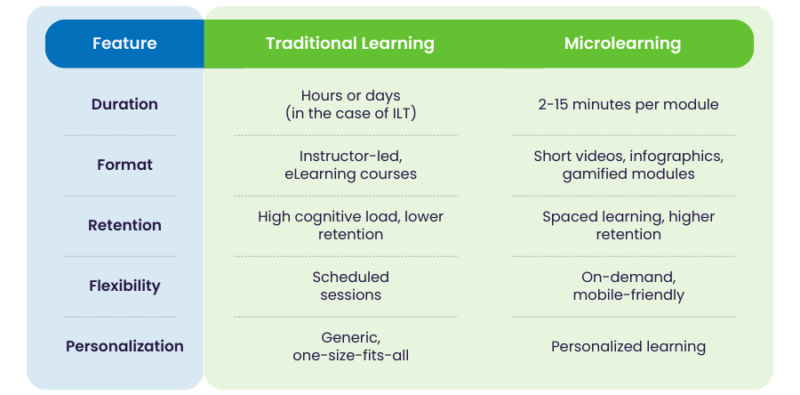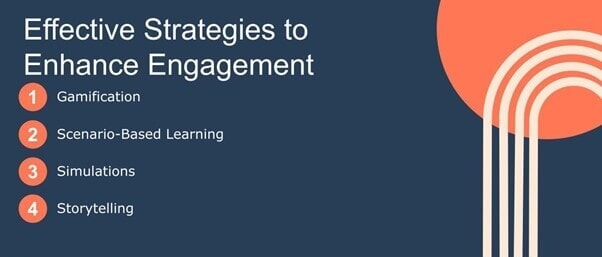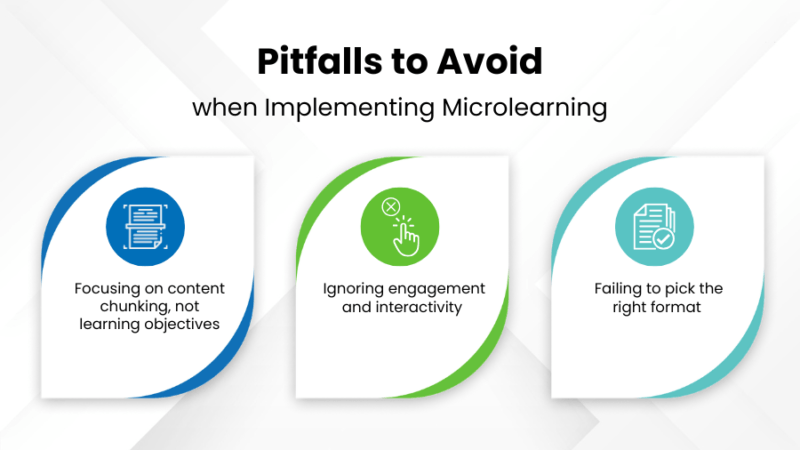Microlearning In 2025: The Basics, Science, Trends, And More

Microlearning In 2025: Where Science Meets Engagement
Corporate training has undergone a significant transformation over the past decade. Traditional training programs are increasingly being replaced by agile, engaging, and results-driven approaches. The modern workforce, characterized by digital-first, time-constrained professionals, demands learning solutions that are quick, accessible, and highly relevant to their job roles. Additionally, the rise of AI, automation, and evolving job roles necessitate continuous upskilling and reskilling. This is where microlearning emerges as a game-changer.
Some practical insights:
- According to Ebbinghaus’ forgetting curve, people tend to forget up to 50% of what they learn within an hour and 90% within a month. [1]
- Attention spans are shrinking, making lengthy training sessions ineffective.
- Learners prefer flexible, mobile-friendly content that fits into their busy schedules.
In response, leading organizations are shifting toward microlearning, which aligns with the “just-in-time” learning model—delivering precise information at the moment of need. As L&D professionals, the challenge isn’t just delivering training but ensuring it sticks and translates into performance improvements.
Microlearning, when implemented strategically, achieves this goal by fostering continuous learning in a way that is personalized, engaging, and scalable.
Microlearning Vs. Traditional Training Approaches
What is microlearning? Microlearning is a corporate training format that delivers short, focused learning modules designed to meet a specific learning objective.
Unlike traditional training methods, which often require hours or even days to complete, microlearning focuses on quick, bite-sized learning experiences that learners can consume in just a few minutes.
Microlearning is fundamentally different from traditional training methods in several ways. Here’s a comparison:

The Science Behind Microlearning
Microlearning isn’t just a trend—it’s backed by solid cognitive science that explains why it improves retention and engagement. Understanding how the brain processes and retains information helps L&D managers design more effective corporate training programs.
Cognitive Load Theory: Reducing Overwhelm, Enhancing Learning
The human brain has limited cognitive capacity, meaning it can only process a certain amount of information at one time. Cognitive Load Theory (CLT) states that when learners are overwhelmed with too much information, retention and comprehension suffer. [2]
Microlearning combats cognitive overload by delivering small, focused chunks of content, allowing learners to absorb information more effectively. This approach ensures that knowledge is processed, stored, and retrieved efficiently, rather than being forgotten due to excessive mental strain.
Imagine training employees on cybersecurity best practices. A traditional three-hour training session might overload them with too much information at once. Instead, a series of short microlearning modules (e.g., five-minute videos on phishing, password security, and malware prevention) would enhance understanding and recall.
Spaced Repetition: Reinforcing Learning Over Time
Spaced repetition is a learning technique that involves spreading out learning sessions over intervals to improve long-term retention. Instead of cramming information all at once, learners revisit key concepts at strategic intervals, strengthening memory pathways and preventing the forgetting curve.
Microlearning integrates spaced repetition by:
- Delivering knowledge in small bursts over time
- Reinforcing periodically through quizzes, flashcards, and scenario-based learning
- Ensuring retrieval practice to strengthen long-term memory
Example: Instead of a yearly training session on compliance policies, microlearning can offer weekly reinforcement quizzes, scenario-based challenges, and short refresher videos to ensure employees retain and apply the information effectively.
The Power Of Just-In-Time Learning
Microlearning supports just-in-time (JIT) learning, where employees can access relevant content precisely when they need it. This provides instant solutions to real-world challenges without disrupting workflow.
Example: A sales executive preparing for a client meeting might need a quick refresher on negotiation techniques. Instead of going through hours of training material, they can watch a three-minute microlearning video or complete an interactive scenario-based module for immediate guidance.
Active Learning And Engagement
Traditional learning methods often involve passive consumption (e.g., reading long manuals or attending lengthy lectures), which results in lower engagement and retention. Microlearning, on the other hand, promotes active learning through various strategies:

Instead of reading a 20-page document on workplace safety, learners can go through an interactive, gamified microlearning module where they identify hazards in a simulated work environment—increasing engagement and retention.
Microlearning For Engagement And Performance
In today’s fast-paced corporate environment, training programs must do more than just deliver information—they must engage learners and drive real-world performance. Microlearning excels in both areas by offering quick, focused, and interactive learning experiences that align with employees’ needs.
Why Microlearning Resonates With Modern Learners
Modern employees, especially in global organizations, face unique challenges:
- Short attention spans. With constant digital distractions, employees struggle to focus on long training sessions.
- Workplace time constraints. Employees often don’t have hours to dedicate to training.
- Need for on-demand learning. Employees want immediate access to relevant knowledge when facing real-world challenges.
- Preference for mobile learning. Many professionals prefer to learn on their smartphones during breaks or commutes.
Microlearning meets these demands by offering short, engaging, and mobile-friendly content that seamlessly integrates into an employee’s workflow.
How Microlearning Drives Engagement
Microlearning solutions stand out for their ability to capture and sustain learner attention, making training more engaging and impactful. Here are some ways microlearning promotes learner engagement:
- Interactive elements. Interactive features such as drag-and-drop activities, simulations, and branching scenarios encourage active learner participation.
- Gamification for motivation. Microlearning can incorporate game elements such as leaderboards, badges, and challenges, fostering healthy competition and motivation.
- Multimedia-rich experiences. Engaging visuals, short videos, infographics, and audio clips create dynamic learning experiences that cater to different learning preferences.
- Real-world application. Microlearning modules are often application-based, helping learners connect the training content to their day-to-day tasks and challenges.
- Immediate feedback. Quick quizzes, flashcards, and assessments provide immediate feedback, reinforcing learning and keeping learners motivated to continue.
Microlearning Trends In 2025
The corporate learning landscape continues to evolve, and microlearning is at the forefront of this transformation. As technology advances and employee expectations shift, L&D leaders must stay ahead of the latest trends to create impactful learning experiences.
Here are the top microlearning trends for 2025 that will shape the future of workplace training.
1. Rapid Design And Development With AI Tools
As L&D professionals look to deliver high-quality microlearning experiences quickly, AI tools such as ChatGPT, Synthesia, Vyond will become invaluable for streamlining design and development. AI-powered platforms can automate the creation of content, including generating personalized learning paths, crafting quizzes, and even producing interactive media such as videos and graphics. This reduces the time spent on manual design work and allows Instructional Designers to focus on strategy and refinement. AI can also predict content gaps, suggesting relevant material based on learners’ behavior, improving both the speed and relevance of content delivery.
2. Gamification 2.0
While gamification has been a key driver of engagement in microlearning, 2025 will see a more advanced integration of game mechanics. Beyond traditional leaderboards and badges, we’ll see immersive game-like environments that enable learners to actively participate in their learning journey. Features such as interactive storytelling, branching decision scenarios, and real-time feedback loops will make the learning experience more dynamic. With gamified challenges that mirror real-world tasks, learners will be able to see their progress, earn rewards for completing milestones, and even compete with peers, making the experience more fun and motivating.
3. Video-First Microlearning Modules
Video will continue to reign as a powerful tool for microlearning, but the format will evolve to incorporate interactive elements that engage learners further. Short, targeted videos will integrate quizzes, clickable decision points, and scenario-based interactions, allowing learners to apply their knowledge in real time. These interactive videos can offer personalized feedback depending on the learner’s choices, making the learning experience more immersive and applicable to real-life situations. With the growing use of mobile devices and easy access to high-quality video tools, microlearning videos will continue to gain popularity for their versatility and effectiveness in skill development.
4. AI-Powered Performance Support
Microlearning will evolve to offer real-time, AI-driven performance support tools that provide learners with just-in-time information and guidance, helping them apply knowledge immediately in their work environment. These tools will provide instant answers, tips, and guidance directly within learners’ workflows, ensuring they can apply newly acquired knowledge immediately. For example, AI chatbots or virtual assistants might pop up during job-related tasks to provide context-sensitive help, offering resources such as short videos, infographics, or how-to guides when a learner needs them most. Such real-time, contextual support reduces the need for long training sessions, making learning continuous and more easily applied to day-to-day work activities.
5. Adaptive Learning Experiences
Microlearning will increasingly leverage adaptive learning technology, adjusting content delivery based on the learner’s progress, behaviors, and performance, ensuring a more efficient and personalized training experience. This real-time adaptation allows learners to engage with material that’s neither too easy nor too difficult, striking the right balance to optimize learning outcomes. For instance, if a learner struggles with a particular concept, the platform may offer additional microlearning modules or practice exercises to reinforce that topic. Adaptive learning provides a highly personalized approach to training, enabling each learner to follow their own learning path.
Implementing Microlearning Successfully In 2025
As organizations navigate the evolving landscape of corporate learning, microlearning has emerged as the go-to strategy for delivering engaging, efficient, and results-driven training. L&D leaders must embrace microlearning as a strategic tool to drive retention, engagement, and performance. With the right strategy, tools, and expert partners, L&D leaders can transform corporate training with microlearning in 2025.

Whether it’s sales enablement, compliance training, or software training, microlearning delivers the agility and impact modern businesses need.
The question is no longer whether microlearning works—it’s how fast your organization can leverage it to stay ahead. Are you ready to implement high-impact microlearning in your organization?
References:
[1] Brain Science: The Forgetting Curve–the Dirty Secret of Corporate Training [2] Cognitive Load Theory: A Guide to Applying Cognitive Load Theory to Your TeachingSource link





